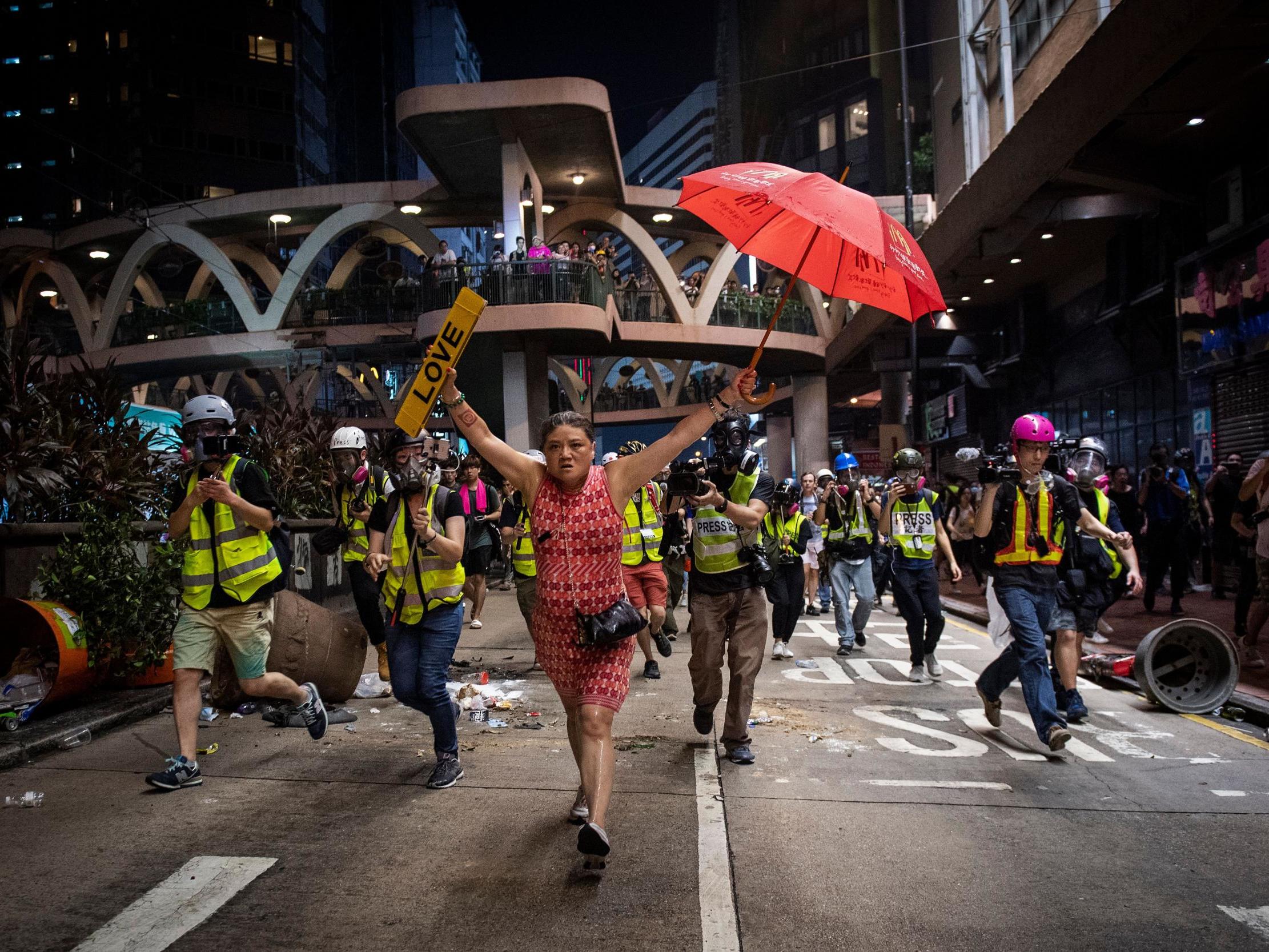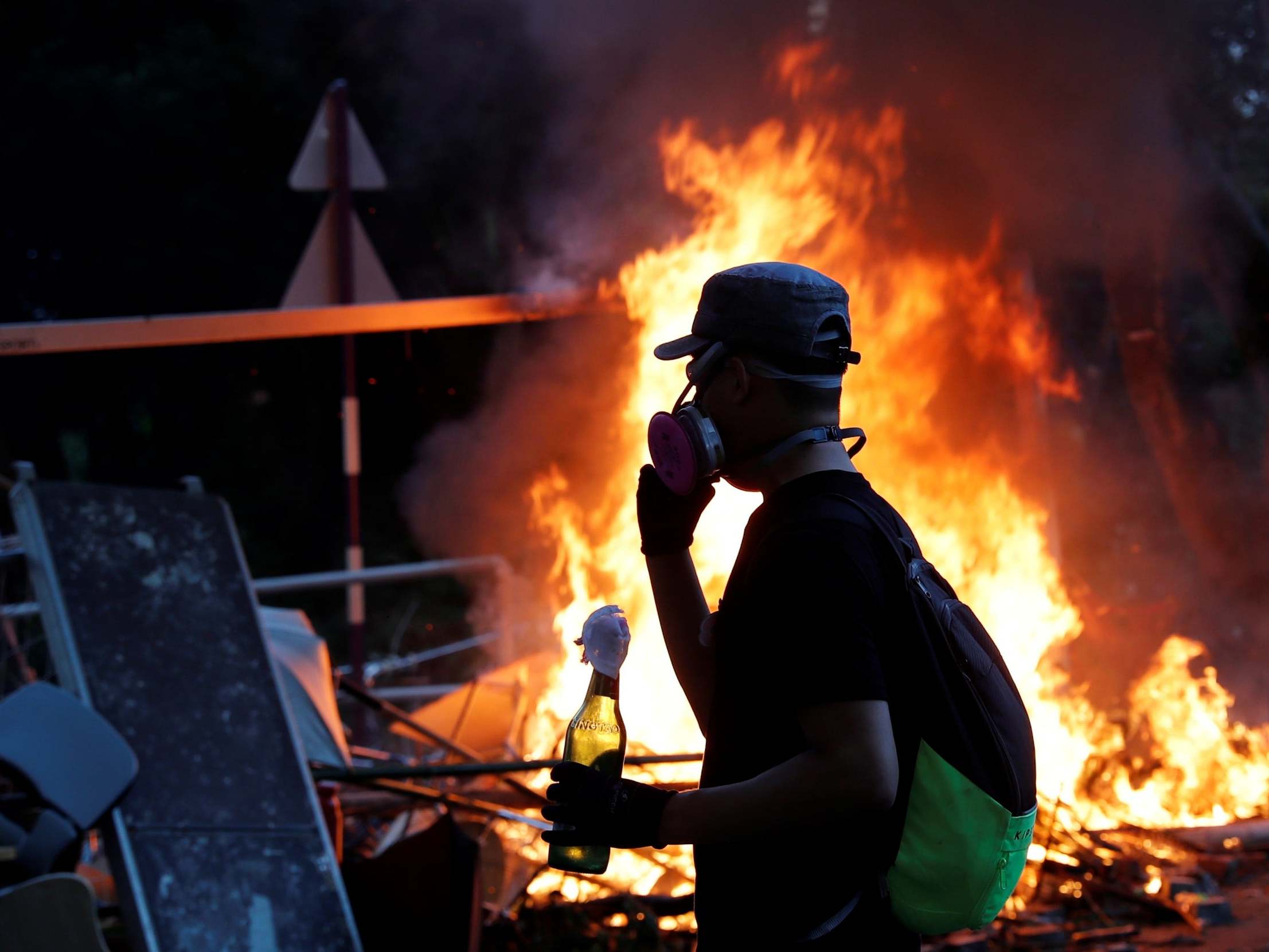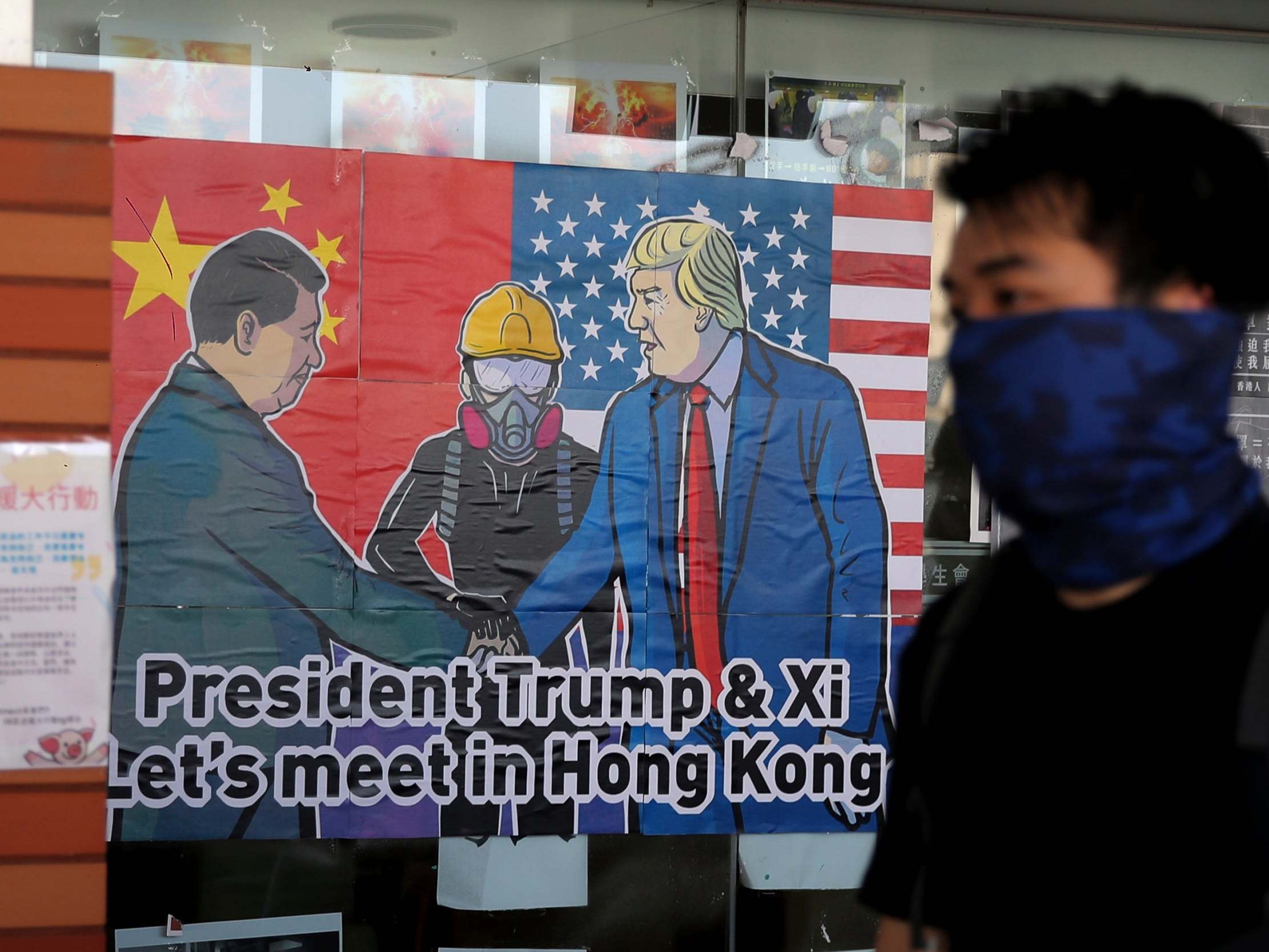The army of volunteer doctors, artists and pastors keeping the Hong Kong protests alive
Young demonstrators ‘are paying with their futures ... we owe them,’ says one supporter

Your support helps us to tell the story
From reproductive rights to climate change to Big Tech, The Independent is on the ground when the story is developing. Whether it's investigating the financials of Elon Musk's pro-Trump PAC or producing our latest documentary, 'The A Word', which shines a light on the American women fighting for reproductive rights, we know how important it is to parse out the facts from the messaging.
At such a critical moment in US history, we need reporters on the ground. Your donation allows us to keep sending journalists to speak to both sides of the story.
The Independent is trusted by Americans across the entire political spectrum. And unlike many other quality news outlets, we choose not to lock Americans out of our reporting and analysis with paywalls. We believe quality journalism should be available to everyone, paid for by those who can afford it.
Your support makes all the difference.The pastor pulled on his respirator and ran directly into the fog of tear gas in central Hong Kong. He was trailed by a homemaker, a retired accountant and a middle-school teacher.
Undaunted by the pandemonium of gasping protesters, they pointed people to safety and poured saline into the eyes of those overcome by the fumes.
With their yellow vests and portable loudspeakers, the Reverend Ka-Kit Ao and his volunteers are an unmistakable presence at the anti-government protests that have upended this semiautonomous Chinese territory.
They form human cordons between protesters and advancing police. They beg baton-swinging officers to go easy. And they solicit the names of those being hustled away in handcuffs so pro bono lawyers can follow up with assistance.
“I sometimes wonder whether we are doing anything of value, but we can’t just sit at home,” Ao, 34, said one recent afternoon before heading into the maelstrom with members of his group, Protect the Children.
Now entering their sixth month, Hong Kong’s protests have been notable for their longevity and for the huge throngs willing to defy authorities with their demands for democracy and police accountability.
Violent clashes erupted across the city on Monday, as a police officer shot a demonstrator and a man arguing with protesters was set on fire.
Behind the scenes, this largely leaderless movement has been sustained by a vast network of ordinary people who hand out bottled water and red bean soup at marches, drive home stranded protesters late at night and donate the gas masks that fortify demonstrators during their pitched battles with police.
Hong Kong professionals have been especially vital. Graphic artists create the eye-catching protest posters across the city. Psychologists provide free counselling to the emotionally distressed. And emergency room doctors, working in clandestine clinics, set shattered bones.
One measure of community spirit can be heard many nights at 10pm, when residents in densely packed neighbourhoods open their windows and shout protest slogans to the heavens.
Another is expressed through the crowdfunding campaigns that have raised millions of dollars for medical treatment, legal defence funds and other expenses.
“Without this public support, the movement would have lost steam a lot sooner,” said Victoria Hui, a political scientist at the University of Notre Dame and author of a book about the Umbrella Movement, the 2014 pro-democracy protests that fizzled after 10 weeks.
“It encourages young people to keep going, giving them the sense they are not alone and that what they are doing is righteous.”
Although actions like setting the man on fire risk eroding support, the protest movement so far has enjoyed broad backing among Hong Kong’s seven million people.
A recent survey by the Chinese University of Hong Kong found that nearly 60 per cent of respondents approved of the protesters’ violent tactics, agreeing that they were justified in the face of an increasingly aggressive police response and a government unwilling to compromise.
This public support presents a thorny challenge to authorities, who have been hoping to quell the protests by driving a wedge between the increasingly radical agitators and those sympathetic to their cause.

“The more the government suppresses this movement and tries to scare people, the more people will step out and stand up,” said the Reverend Roy Chan, a founder of Protect the Children, which has nearly 200 members.
Encrypted messaging app Telegram serves as the town hall for the support network, with dozens of channels that match volunteers to those in need.
Most prolific are the channels offering rides to protesters affected by the subway shutdowns that authorities impose to dampen protest turnout. The rides also help protesters avoid the police sweeps that target public buses.
Like many drivers, Patrick Chan, 38, a garment factory manager, said fear of arrest kept him away from the protests, most of which police have deemed illegal. Guilt and shame, though, are powerful motivators.
Chan spends hours in his beat-up BMW sedan ferrying weary, sweat-drenched protesters to housing complexes across the city.
“These young people are trying to right the wrongs that we have long been avoiding,” he said, referring to Beijing’s two-decade effort to chip away at the vaunted liberties that differentiate this former British colony from mainland China.
“They are paying with their futures, risking the possibility of being locked up for years. We owe them.”
The sense of public service has also mobilised dozens of doctors, nurses and medics. Much of their work takes place in secret.
That is because all but the most grievously injured protesters avoid Hong Kong’s hospitals after the arrest in June of several people who had sought care for broken bones and blunt trauma. These days, the injured are sometimes treated at clandestine clinics that provide X-rays and rudimentary surgery.
Dr Tim Wong works the protests after his regular hospital shift. An emergency room doctor, he decided to act after police made a number of arrests at his hospital, which he declined to name for fear that it might endanger his employment.
“Since then, no one has come to our emergency room for treatment, unless they are escorted by the police,” he said. “It’s outrageous. Hospitals should be sanctuaries.”
One recent evening, he hovered near the front lines of a skirmish as Molotov cocktails, bricks and tear gas canisters arced overhead. Many of those needing medical treatment were bystanders caught up in the mayhem.
Just then, Ao and another member of his group rushed by carrying a man injured by a tear-gas canister. All three of them were weeping.
“I can’t believe this is happening to our city,” the pastor wailed as they dragged the man to a first aid clinic inside a Methodist church that has become a beacon for protesters.
Earlier that afternoon, Ao and scores of volunteers had gathered at a subway station to plot the day’s movements. After dividing up into teams of seven, he reminded everyone to refrain from chanting slogans and urged them to be polite to law enforcement authorities.
“They might call us cockroaches, but we should refer to them as police officers,” he said. Then everyone bowed their heads in prayer. “May we have God’s protection and the patience, love and wisdom to deal with the police,” Ao said.
Volunteers say police rarely return the favour, treating them as antagonists.
In September, police were widely criticised after a video emerged that appeared to show a knot of officers kicking a Protect the Children member as he lay on the ground. The man, wearing the group’s trademark yellow vest, was later arrested.
At a news conference, a senior police official dismissed allegations of abuse, suggesting that the video had been doctored and that what many saw as a person was actually “a yellow object”. In the weeks that followed, the group’s ranks swelled with new recruits, Ao said.

Many of the group’s volunteers are retirees like Ah Lin He. A fiery, reed-thin woman, He, 68, was born in the Chinese city of Guangzhou and swam to Hong Kong in 1972 to escape the chaos of the Cultural Revolution.
She doggy-paddled for 10 hours with five other people. Only three of them made it to shore.
“I’ve seen the repression and madness that can be unleashed by the Communists in China,” she said as the group trudged to a protest that had turned violent.
Walking beside her was Joe Pao, a 29-year-old pastor, who joined the group after a brief stint as a protester. “I realised I could do something more useful than throwing bricks,” Pao said.
He acknowledged that his role as a putative peacemaker was rarely gratifying. Most of his work involves urging police to exercise restraint. “When they catch people, we tell them to please respect the powers they have and not abuse them,” he said. “The impact is definitely small.”
Most protest supporters operate more independently. Nam Kwan, a cultural foundation administrator, has fed, housed and comforted scores of youths whose parents, enraged by their participation in the protests, tossed them out of their homes.
She traces her transformation from silent sympathiser to frenetic den mother to 12 June, when police escalated their tactics by firing rubber bullets and beanbag rounds at unarmed protesters.
“When I heard the first gunshot, a bell rang inside me, and I automatically found my place,” she said. “Nowadays my phone is on 24 hours a day because I’m afraid I might miss urgent messages or calls for help.”
In addition to buying protective gear for protesters, she coordinates financial support and car pools from wealthy friends eager to help but reluctant to do so publicly. Oftentimes, she finds herself on the street, dispensing hugs or patiently listening to the worries of young protesters.
“Every time these kids go to the front lines, they fear for their lives,” she said. “But what they fear more is abandonment, that one day we will all turn our backs and leave them alone.”
New York Times
Join our commenting forum
Join thought-provoking conversations, follow other Independent readers and see their replies
Comments